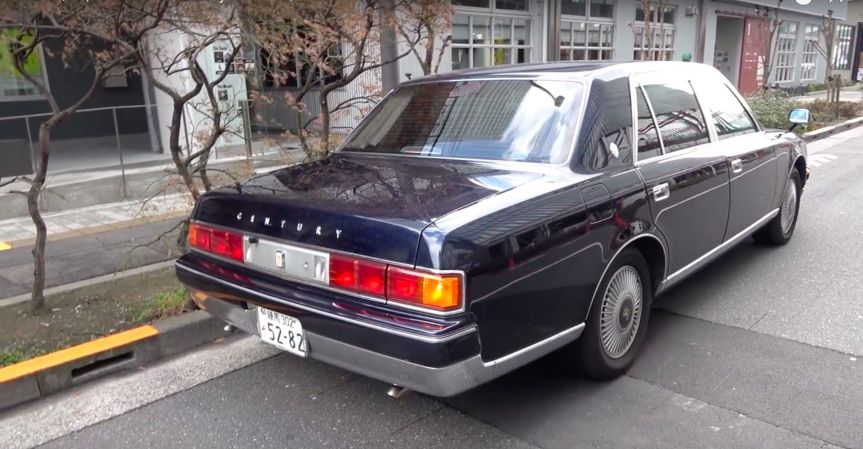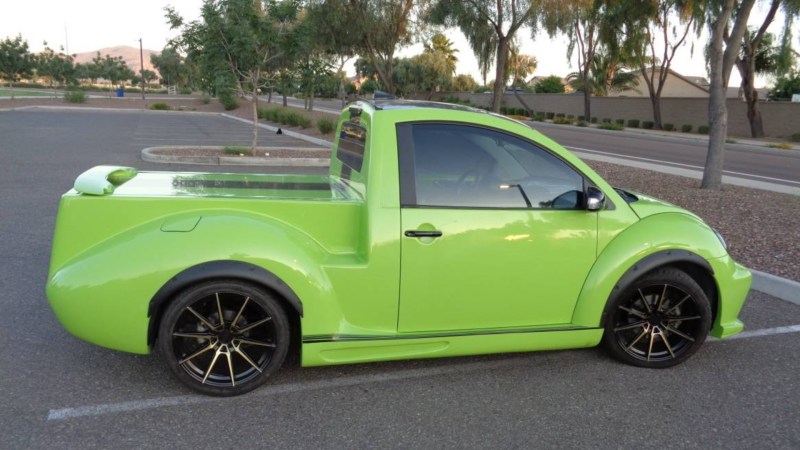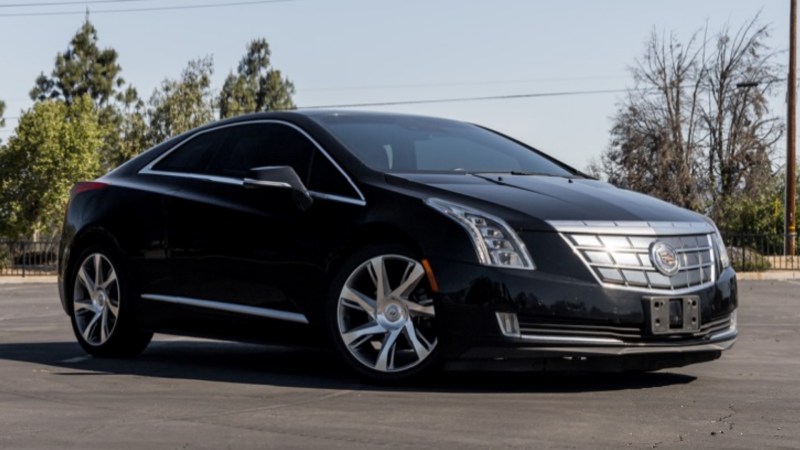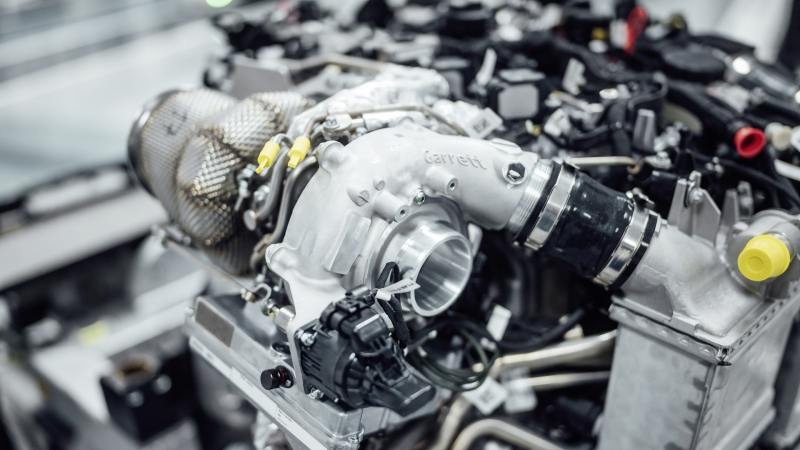

2007. That’s how long ago the current Toyota Tundra was introduced, minus a refresh in 2014. In that time, it’s kept a smaller but loyal fanbase that tends to complain about—of all things—odometers that don’t go high enough. Now the next-gen 2022 Toyota Tundra is finally here, with a completely new design that features a new high-strength boxed steel frame, smoother-riding multi-link rear suspension, composite bed and an available range-topping hybrid twin-turbo V6 drivetrain.
Toyota even bought back a million-mile Tundra from a customer in designing the new one to figure out how to deliver more of what its biggest fans want: namely, a nicely optioned pickup that’s also hard to kill.

As a result, there’s a lot of proven tech and ideas in the new Tundra. The aluminum-reinforced composite bed was already a popular feature on the Tacoma for its durability and resistance to corrosion. Likewise, the hybrid system uses a nickel-metal hydride (NiMH) battery instead of a newer-style lithium-ion one—battery tech that Toyota’s been refining since the first-gen Prius.
Yet there’s also plenty of newness to ooh and aah over, including a brand-new infotainment system with an available 14-inch screen, an integrated light bar in the TRD Pro’s grille and thoughtful upgrades to the truck’s aerodynamics across the line. Engineers incorporated active aerodynamics that work differently based on how you’re using the Tundra after they noticed significant differences in the wind tunnel in how air moves around the Tundra when it was towing versus when it wasn’t. The tailgate even has a subtle lip spoiler, for Pete’s sake.



No More V8, But More Power
All new Tundras come with Toyota’s new twin-turbo, 3.5-liter i-Force V6, good for 389 horsepower and 479 lb-ft of torque. That’s not just more power (8 hp) and significantly more torque (78 lb-ft) than the outgoing V8, but Toyota claims it’s more efficient as well. We’ll have to wait on the new EPA figures, but given that the V8’s lackluster fuel economy was one of the biggest downsides to the current Tundra, there’s ample room for improvement there.

The new engine is a 24-valve, dual overhead cam, chain-driven V6 with Dual VVTi systems (Toyota’s version of variable valve timing), and an aluminum block. It also uses an intercooler to keep turbo temperatures down. Cooling was a major focus of the engine’s design, with a two-layer water jacket design and additional machined-in cross-channels that are meant to maximize coolant flow, and thus, improve reliability.

The most efficient drivetrain is also the most powerful one. The hybrid i-Force Max Version of the Tundra drivetrain keeps the same V6 but adds a motor-generator with a clutch into the bell housing in-line between the engine and the transmission. This extra motor boosts the whole system up to 437 hp at 5,200 rpm and 583 lb-ft of torque that hits at only 2,400 rpm, the latter of which is especially great for towing and off-road use.
The Tundra is even capable of some EV-only driving, although the gasoline engine automatically kicks in at speeds over 18 mph. Start-up, EV-only driving, energy regeneration and electric assist are all done via the parallel hybrid system.
That tried-and-true 288-volt sealed NiMH battery for the hybrid system tucks neatly under the rear seat. According to Toyota representatives who spoke to The Drive, a full-size truck doesn’t need the extra packaging benefits of switching to a more compact lithium-ion battery. They also touted it as a sustainable choice given that there’s already an established recycling process for its NiMH hybrid batteries once it reaches its end of life—something that’s still an expensive challenge when it comes to Li-Ion hybrid batteries.



Non-hybrid trucks get an enclosed storage area under the rear seats instead.
Both engines are mated to a 10-speed electronically controlled automatic transmission that features sequential shift modes, different shift logic for uphill and downhill travel and two Tow/Haul driving modes.
The regular Tow/Haul mode is meant for lighter trailers, and merely increases throttle response. Tow/Haul+ increases throttle response even more to accommodate for even larger loads. With the hybrid drivetrain, engaging Tow/Haul also deactivates start/stop and keeps the electric motor in constant use providing extra acceleration and torque to further compensate for whatever you’re hauling.

Smoother and Stronger
The new Tundra now comes with a maximum towing capacity of 12,000 pounds (+17.6% over the old Tundra) and max payload capacity of 1,940 lbs (+11%)—numbers that are now competitive with similarly spec’d half-ton pickups from GM, Ram and Ford. The Tundra has always existed outside the Big Three’s stats wars, as the highest numbers are often offered on work trucks that Toyota doesn’t make an equivalent for anyway. At a pre-release preview event, Toyota reps kept referring to the Tundra as a “premium towing experience” that caters more to enthusiasts and outdoorsy-types.
Those decent specs are thanks to a lot of improvements under the sheet metal, including a high-strength, fully boxed steel-ladder frame and a completely redesigned multi-link rear suspension. According to Toyota, moving to a fully-boxed frame makes this Tundra significantly more rigid than the current-gen truck, adding to its capability. The rear frame member was also widened to help improve stability, whether you’re towing or not. The new frame crossmembers were more than doubled in size to add rigidity and support. A new crossmember was also added for the steering gear box to improve handling dynamics.
Should you desire even more comfort, opt for a Limited or higher trim where the cabin is mounted to the frame with hydraulic cab mounts.

Toyota expressly wanted to keep the Tundra from driving and riding “like a truck,” and the new frame isn’t the only thing the company credits for improvements in the new Tundra’s ride quality. The new Tundra’s multi-link rear suspension ditched its leaf springs for coils, resulting in better handling dynamics as well as a more stable, comfortable ride. The front also sports a new double-wishbone design meant to improve the Tundra’s high-speed and straight-line stability. Body roll and roll steer have been reduced as well to make the truck more stable in turns.
Meanwhile, the improvements in towing and payload capacities primarily come down to the new frame and suspension design. The shock absorbers were moved to a more efficient spot outside the frame rails for better roll damping and towing performance, and the new suspension features a lateral control arm that further beefs up lateral rigidity.


More Improvements In Truck Tech
It’s not a pickup without a bed, and Toyota’s aluminum-reinforced composite bed design was enough of a hit on the Tacoma to bring over to its big bro. It’s lighter and less prone to corrosion than the steel bed the Tundra used to have, and more durable than an aluminum-only bed. Oh, and if you need something from in the bed when you’re in the cabin, the entire rear window slides down to make that easy to reach. If you’d rather just use the tailgate, there’s a cool bump-switch on the side of the driver’s side taillight you can nudge with your elbow to drop the tailgate.
Under that bed and body are plenty of other improvements that should help smooth out whatever you’re trying to send it over. The Tundra comes standard with twin-tube shocks with triple-oil seals and extended dust covers, steel-reinforced ball joints, and new aluminum-forged knuckles that are stronger and lighter than the current gen’s.
The TRD Off-Road package is back for SR5, Limited and 1794 models and includes an upgrade to monotube Bilstein shocks, a TRD grille, TRD off-road suspension, mud guards, skid plates, TRD wheels and a leather shift knob, plus an electronic locking rear differential on the 4×4 models.



The off-road-oriented TRD Pro trim is back for the new generation as well. The Tundra TRD Pro gets 2.5-inch-diameter Fox internal bypass shocks that add a 1.1-inch lift to the front of the truck. Piggyback reservoirs feed the shocks with extra oil to keep them performing well over longer stretches of rough terrain. Even the Fox shocks’ fluid itself was upgraded to a polytetrafluorethylene-infused one designed to reduce friction and ride more comfortably on pavement.
The TRD Pro model also gains a front stabilizer bar, a beefy TRD aluminum front skid plate, Falken all-terrain tires and extra underbody protection. Oh, and some of the TRD Pro’s suspension parts are painted red since they’re easier to see with that extra lift.
Both TRD Pro and trucks with the TRD Off-Road package come with a series of extra features for trail use. Multi-Terrain Select does what it sounds like: lets you select the kind of terrain you’re on so the truck can better control wheel spin. Crawl Control lets the driver choose from five different crawling speeds that the truck can automatically maintain to free up the driver to focus on steering through an obstacle. Downhill Assist Control does a very similar role insofar as it limits the speed of the Tundra during a tricky descent.

The Tundra also offers a new air suspension system in the rear of certain trims that features automatic and manual leveling as well as High, Low and Normal height settings. High mode is meant for sub-18-mph off-road driving, and it also reduces roll rigidity so the truck can maintain traction better over off-road obstacles. Low height is available under 8 mph, and it’s designed to help with loading and unloading. It can also load-level itself to find the appropriate height while trailering.
Another option is the new Adaptive Variable Suspension system, which is a solenoid-based system that continuously adjusts damping force based on road conditions using built-in actuators in the shock absorbers themselves. This helps keep the ride as smooth as possible, even over garbage potholes.




New Creature Comforts
Toyota’s new interior thankfully keeps a ton of buttons for the most used functions in an interior, including a volume knob for the stereo and all the HVAC controls you could ever want. It includes a standard 8-inch or a bigger 14-inch touchscreen front and center, with an entirely new UI that’s more reminiscent of a tablet computer. The 14-inch screen comes with pinch-and-zoom features and higher resolution.
Apple CarPlay and Android Auto are standard in the new infotainment system, as are over-the-air updates to keep it up to date and running smoothly. The system also comes with an Intelligent Assistant you can use voice controls for navigation, audio and more with, including phrases like “Hey Toyota” to wake it up. The Tundra also offers Wi-Fi Connect, which turns the truck into a 4G hotspot for up to 10 devices.



The new Tundra also come with several new camera angles—available in a full 360-degree view—to make towing and parking easier, plus there’s even a rearview mirror camera available. The available 14-inch touchscreen unlocks a few more views, namely Multi-Terrain Monitor and Panoramic View Monitor, the latter of which is a full top-down view of the truck, good for lining up trailers or checking on cargo. Multi-Terrain Monitor comes on the TRD Pro trim and TRD Off-Road package, which adds a button to bring up front-, side- and rear-views of the truck on the display to more easily navigate obstacles.
Trailering was a big focus in the upgraded Tundra, with the truck getting new power extending and folding tow mirrors that are taller, heated and incorporate an extra curvature that extends the driver’s rear field of view. These new mirrors also have rearward-facing LED trailering lights that can help you see what you’re trying to haul in low-light situations. The new Tundra also features an integrated trailer brake controller, Trailer Back Guidance to help you back up a trailer, and Straight Path Assist to back up your trailer in a straight line if you need to. Its Blind Spot Monitor—part of the standard Toyota Safety Sense 2.5 suite of driver assists found on all new Toyotas—is even calibrated to watch out for the extra blind spots around whatever you’re towing as well.



A panoramic roof, heated and ventilated front seats, heated steering wheel, and rear sunshade are among the options you can spec. One of the best looking options is the 12.3-inch thin film transistor display that replaces the traditional gauge cluster with a customizable digital one.
Coming Soon
The new Tundra will be available in two four-door versions—a Double Cab and the longer CrewMax. Double Cab buyers can get a 6.5- or 8.1-foot bed, while the CrewMax gets either a 5.5- or 6.5-foot bed. You can get it in both two- and four-wheel drive, with a familiar sounding range of trim levels, in order from most basic to extra-luxe: SR, SR5, Limited, Platinum, and 1794 Edition. The TRD Pro is the top-of-the-line version, and only offered with the hybrid i-Force Max powertrain.
Pricing is yet to be announced, but we’ll find out soon enough as the 2022 Tundra goes on sale later this year.




























































Got a price list or other tips on new trucks? Drop us a line: tips@thedrive.com.























